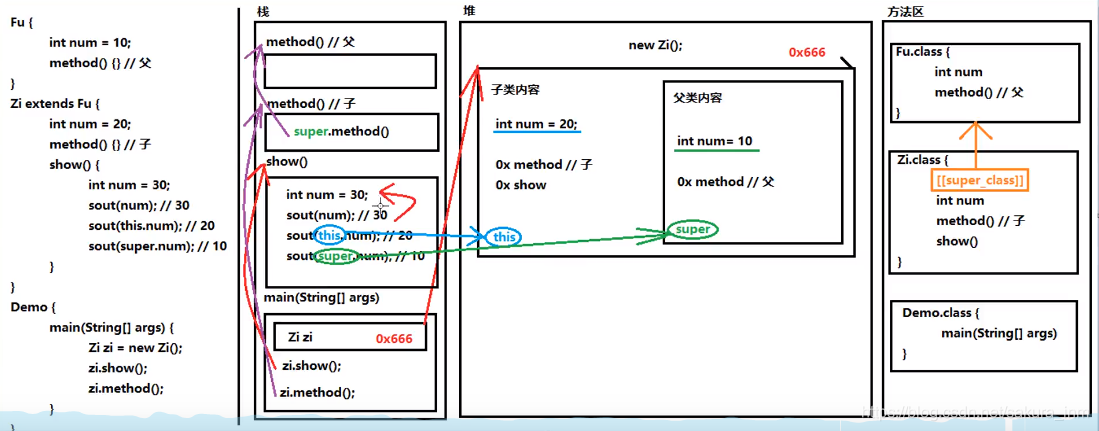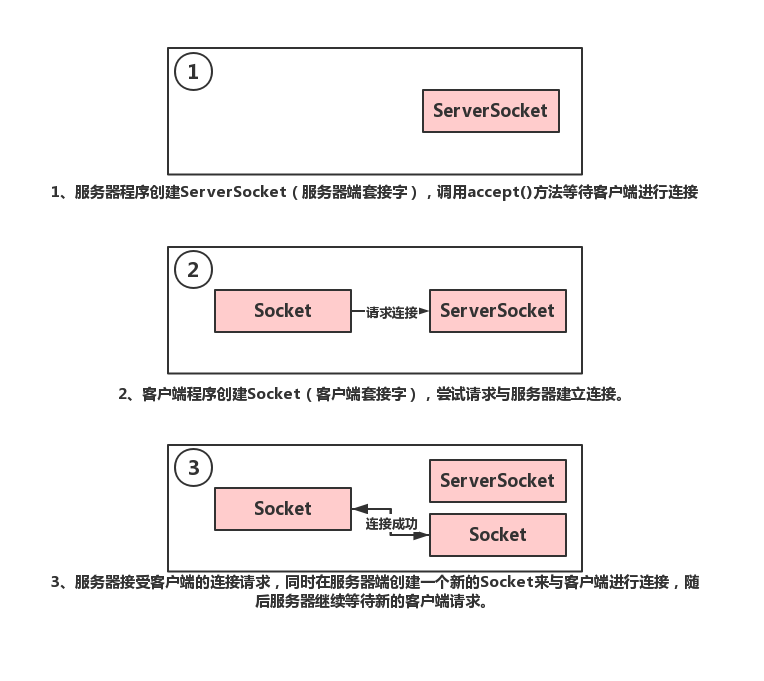Java中super和this的用法詳解
super 用法super關鍵字用來訪問父類內容,具體用法可分為三種:1.子類的成員方法訪問父類的成員變量
public class Animal { public int age = 10;}class Dog extends Animal { public int age = 5; public void showAge() { System.out.println(super.age); }}
2.子類的成員方法訪問父類的成員方法
public class Animal { public void fn(){ System.out.println('父類Animal的方法'); }}class Dog extends Animal { @Override public void fn() { super.fn(); System.out.println('子類Dog的方法'); }}
3.子類的構造方法訪問父類的構造方法
public class Animal { public Animal() { System.out.println('父類Animal的構造方法'); }}class Dog extends Animal { public Dog() { super(); System.out.println('子類Dog的構造方法'); }}
this 用法this關鍵字用來訪問本類內容,具體用法可分為三種:1.本類的成員方法訪問本類的成員變量
public class Dog extends Animal { public int age = 1; public void showAge() { int age = 3; System.out.println(age); System.out.println(this.age); }}
2.本類的成員方法訪問本類的另一成員方法
public class Dog extends Animal { public int age = 1; public void showAge() { int age = 3; System.out.println(age); System.out.println(this.age); } public void fn() { this.showAge(); }}
3.本類的構造方法訪問本類的另一個構造方法,此時this(…)調用必須放在這個構造方法中的第一句,且只能使用一次
public class Dog extends Animal { public Dog() { this(2); System.out.println('無參構造'); } public Dog(int age) { System.out.println(age); System.out.println('有參構造'); }}
super和this內存圖解

總結
到此這篇關于Java中super和this的用法的文章就介紹到這了,更多相關Java中super和this的用法內容請搜索好吧啦網以前的文章或繼續瀏覽下面的相關文章希望大家以后多多支持好吧啦網!
相關文章:

 網公網安備
網公網安備